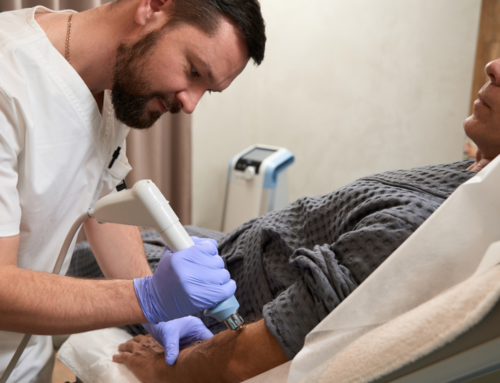With Wimbledon and the Olympics happening next month, the number of tennis related injuries we see at our clinics will stary to increase. So let’s take a look at the most common tennis injuries.
Shoulder Impingement
The shoulder is a very mobile joint that allows us to move our arm into a variety of positions for optimal function. This is very important in sports such as tennis where such a wide range of motion is needed. However, this tends to lead to your shoulder being more vulnerable to injuries and one of these is known as shoulder impingement.
Shoulder impingement usually happens over time and with repetitive use of the shoulder. You may notice pain when playing overhead shots and serving. This can be due to a variety of factors but means that the tendon and bursa in the shoulder may be caught or “impinged” underneath the bone. Players will often complain off sharp pain in the front and deep to the shoulder. If it progresses it can start to cause more pain and affect performance on the court.
Our team at Peak Wellness are all experienced in the rehabilitation of shoulder injuries and this often complements injections well. Prevention of such injuries is of course very important going forward and our team can provide this for you.
Calf tears
A tear in the calf muscle is one of the more common injuries and is classically associated with Tennis and is often referred to as “Tennis Leg”.
Usually the inside calf muscle, the medial head of gastrocnemius, is involved. Players will often feel a sudden, severe pain especially when planting the foot down whilst playing tennis. Often bruising and swelling happen quickly afterwards. It can be difficult to walk and often crutches are needed to mobilize. Applying ice and a compression bandage is very important to reduce the amount of bleeding.
These injuries are usually classified as grade 1 to 3:
- Grade 1 represents some mild tearing of the muscle fibers
- Grade 2 is where more extensive damage occurs.
- Grade 3 is a full rupture/ complete tear occurs.
It is important to get an early diagnosis and correct management. Our team at Peak Wellness will assess the injury with clinical testing, including range of movement, strength and function.
Recovery varies from a couple of weeks to several months in some cases, and a robust Physiotherapy / rehabilitation approach usually works very well. Its is important to fully recover before returning to tennis to reduce the risk of a recurrent injury.
Tennis Elbow
Tennis elbow is the most common condition that affects many people whether they play tennis or not. Pain is usually felt on the outside part of the elbow where the wrist extensor muscles attach to the bone of the elbow called the lateral epicondyle. This can be due to repetitive movements including backhand strokes. Good technique and racquet grip is important to reduce the risk of the injury developing.
An assessment of the injury with a Physiotherapist or Osteopath includes neck and upper limb strength and control — as this can lead to the localized problem at the elbow. If the problem is not settling with Physiotherapy, a Sport, Exercise & Musculoskeletal Medicine Consultant opinion would be indicated. It is important to exclude other conditions such as nerve entrapment and osteoarthritis of the elbow. Diagnostic ultrasound would confirm the changes seen in tennis elbow and also assess other conditions as well. Sometimes an X‑ray or MRI may be needed.
In all of the above, it’s important to note that correct technique and coaching for tennis and racquet sports is very important and worth the investment in time!
If you are wanting to take your training to next level then we suggest fitness testing. Contact us at Peak Wellness for more information on our training programs and resources!








